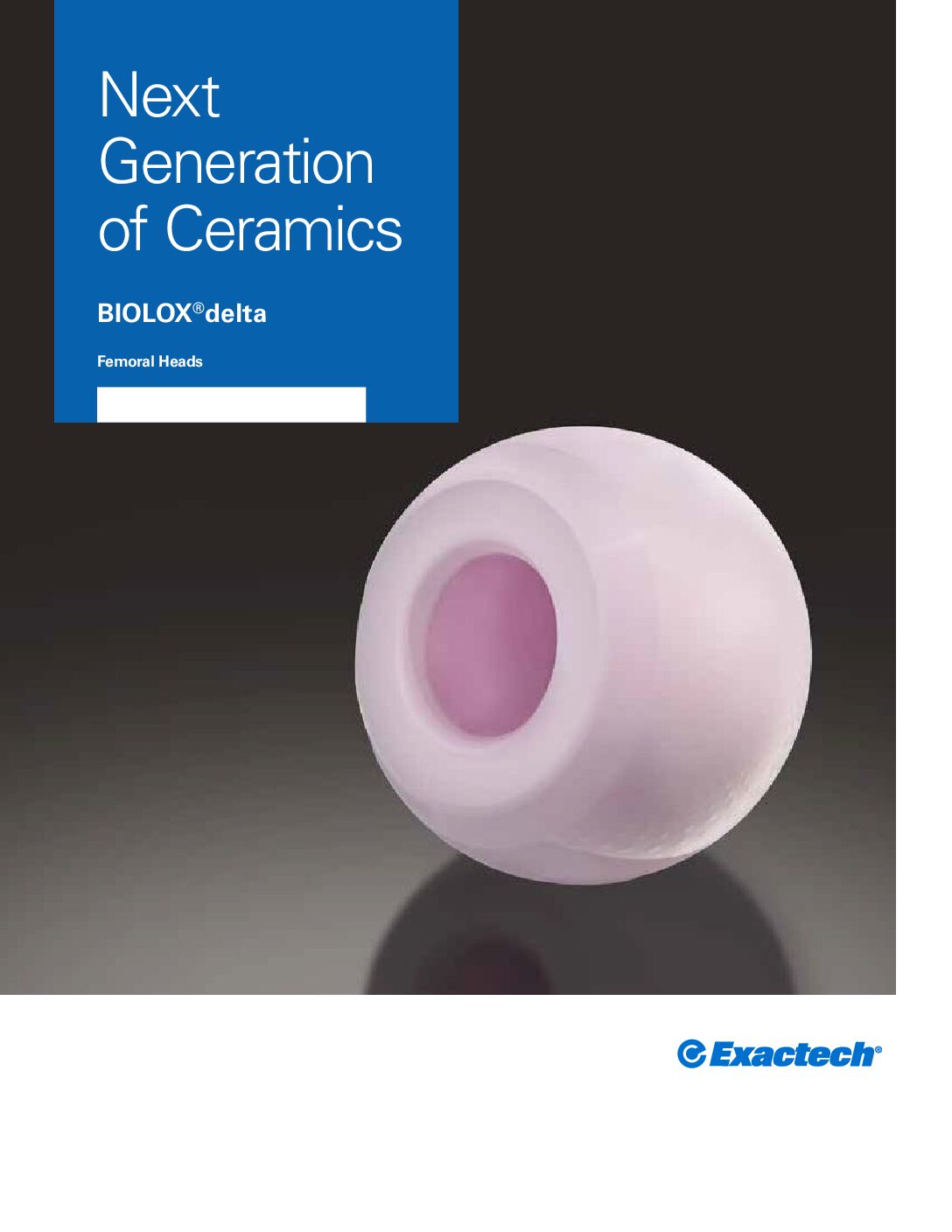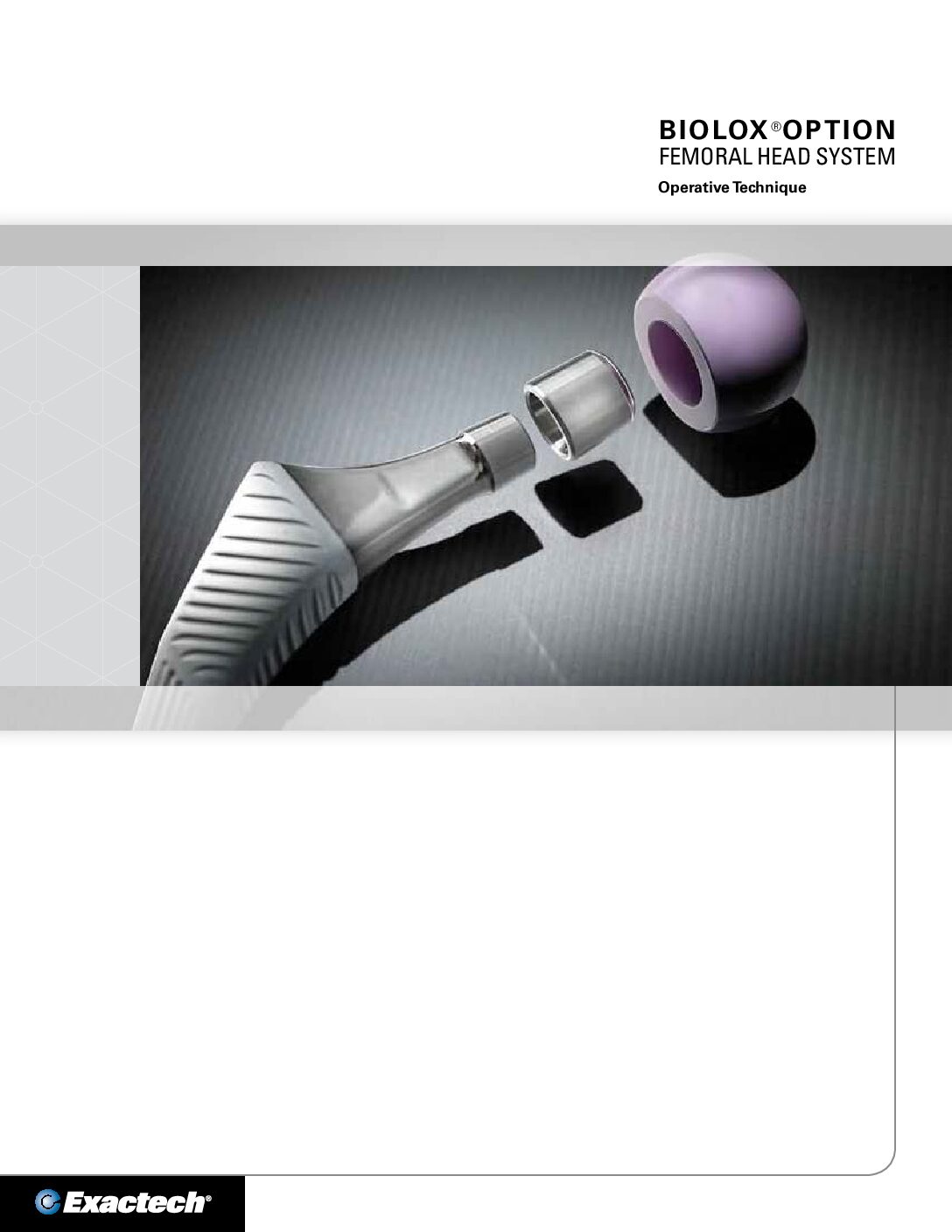Next Generation of Ceramics.
BIOLOX® delta
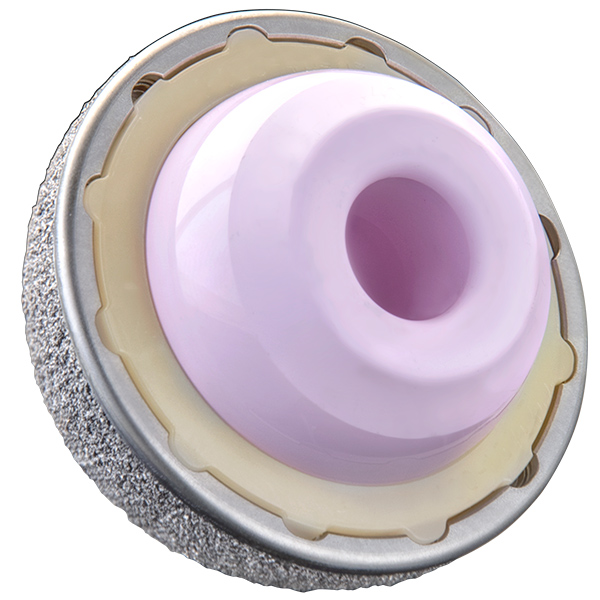
BIOLOX® delta
The next generation of ceramics is available with XLE Vitamin E, our advance polyethylene material with superior oxidative resistance, low wear, and optimized mechanical strength.1-9 This material also provides a new ‘option’ for using a ceramic femoral head in a revision scenario with the BIOLOX®OPTION.
Science Behind the Material
Aluminum oxide matrix consisting of approximately 80% alumina, 17% zirconia and 3% strontium oxide.
Zirconia was added to increase the material strength and prevent the initiation and propagation of cracks.
An additional toughening mechanism is created with the addition of strontium oxide, which forms a platelet type crystal to dissipate energy by deflecting cracks.
Alumina
Zirconia
Strontium Oxide
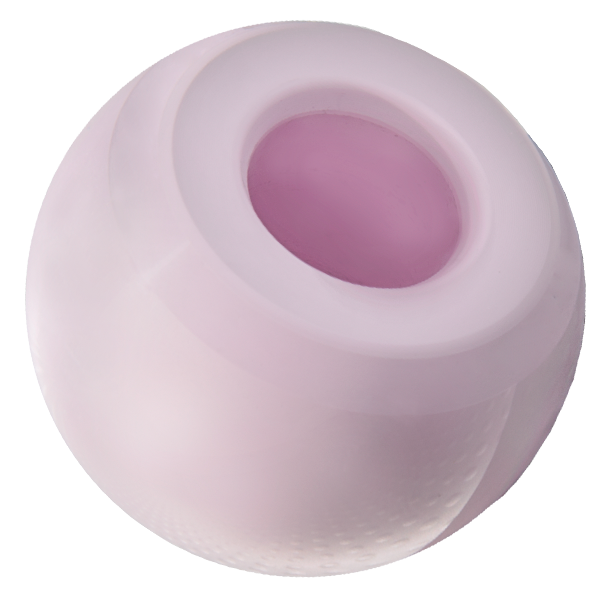
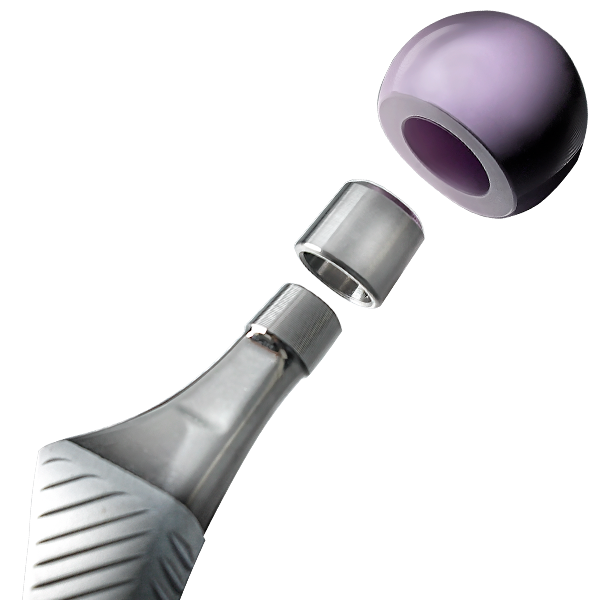
BIOLOX® OPTION
The need for a low-wear ceramic bearing in revision arthroplasty was not available in the past. The OPTION is comprised of two components:
- BIOLOX®delta ceramic femoral head
- Adapter sleeve
The titanium adapters have an internal 12/14 taper that mates with the femoral stem while the OPTION heads have a taper designed to mate with the adapters.
BIOLOX® delta Resources
BIOLOX® is a registered trademark of CeramTec.
- Oral, E, Muratoglu, O, “The effects of high dose irradiation on the cross-linking of vitamin E-blended ultrahigh molecular weight polyethylene,” Biomaterials 29 (2008) 3557-3560
- Oral, E, Muratoglu, O, “Vitamin E diffused, highly crosslinked UHMWPE: a review,” Int Orthop. 2011 Feb; 35(2): 215-223
- Data on file at Exactech. TM-2022-0693. Shelf Oxidation Analysis of XLPE Liners.
- Muratoglu OK, Bragdon CR, O’Connor DO, Perinchief RS, Estok DM, Jasty M, Harris WH (2001) Larger diameter femoral heads used in conjunction with a highly cross-linked ultra-high molecular weight polyethylene: A new concept. J Arthroplasty 16(8 Suppl):24 -30
- Oral E, Christensen S, Malhi A, Wannomae K, Muratoglu O (2006) Wear resistance and mechanical properties of highly crosslinked UHMWPE doped with vitamin E. J Arthroplasty 21 (4):580 -591
- Muratoglu OK, Bragdon CR, O’Connor DO, Jasty M, Harris WH,Gul R, McGarry F (1999) Unified wear model for highly crosslinked ultra-high molecular weight polyethylenes (UHMWPE). Biomaterials 20(16):1463 -1470
- Ries M, Pruitt L (2005) Effect of crosslinking on the microstructure and mechanical properties of ultra-high molecular weight polyethylene. Clin Orthop Relat Res 440:149 -156
- Oral E, Wannomae KK, Hawkins NE, Harris WH, Muratoglu OK (2004) a-Tocopherol doped irradiated UHMWPE for high fatigue resistance and low wear. Biomaterials 25(24):5515 -5522
- Ebru Oral, Bassem W. Ghali, Orhun K. Muratoglu. “The elimination of free radicals in irradiated UHMWPEs with and without vitamin E stabilization by annealing under pressure.” J Biomed Mater Res B Appl Biomater. 2011 Apr;97(1):167-74. doi: 10.1002/jbm.b.31799. Epub 2011 Feb 24

